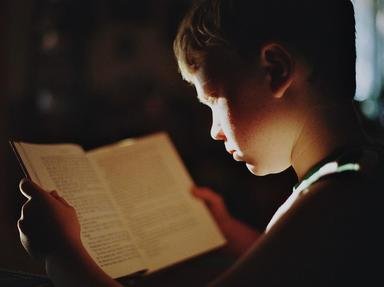Quiz Answer Key and Fun Facts
1. In order to research this famed biographical novel of the early 1960s, the author apprenticed himself in the medium that the artist preferred and commissioned translations of hundreds of his letters. The film version starred an actor who, coincidentally, had portrayed in another film the subject of one of the artist's best-known works. What is this bestselling book, by a man who also produced fictional treatments of the lives of other artists?
2. A short poem penned by a great Romantic for a competition was thought to have been inspired by a work of ancient art. In fact, this verse comment on mortal hubris brought to dust was written before the poet could have seen the work in question, but he might well have heard of it, before it became available for his examination. What is the work of art in question?
3. A much-admired painting involving a piece of jewelry was the inspiration for a 1999 novel that was turned into a film. What is this work, signed by one of the world's less-prolific and more historically-elusive great artists?
4. In 1916, a lawyer's son and onetime medical student traveled to an island in order to research a novel, one inspired by the life of a painter who had, like the writer, turned his back on a respectable profession to answer the siren call of art. What is this book, published in 1919?
5. Every now and then, an art historian tries his or her hand at fiction. Who is the Oxford-trained scholar and journalist, also known for a complex novel set in 17th-century England, who has produced a mystery series involving a British art historian and the art-theft squad of the Italian police?
6. An ancient myth features two figures who have long been considered, by writers and philosophers, avatars of artistic daring and ambition, sometimes destined to fail. As depicted in a certain work of northern European art, it inspired not one but TWO literary works by important 20th-century poets. What is the myth in question?
7. A 16th-century Italian is the only artist to be mentioned by name in the plays of William Shakespeare. Who was this versatile painter, architect, and designer?
8. A trilogy of novels concerns a painter/art collector, who once worked as a restorer under the Nazis, and the interesting consequences of his death. What distinguished North American writer produced this critically-acclaimed series?
9. A professor of Philosophy married to an art historian summers in the country and becomes convinced that his oblivious neighbor owns a valuable lost painting, one belonging to a well-known series. What is this novel, written by a man rather better known for his work in the theater?
10. This Booker Prize winner and Commander of the British Empire was well known to the world of Art History long before she became a novelist. Who is this distinguished author, whose scholarly field of specialization was 18th-century French art and whose prize-winning book concerns a woman on a therapeutic holiday in Switzerland?
Source: Author
lanfranco
This quiz was reviewed by FunTrivia editor
gtho4 before going online.
Any errors found in FunTrivia content are routinely corrected through our feedback system.
